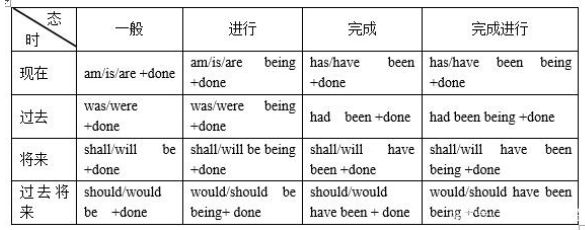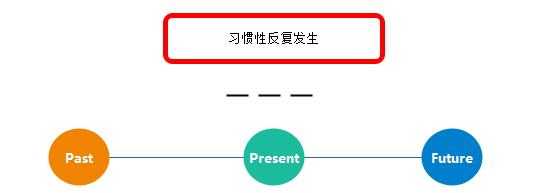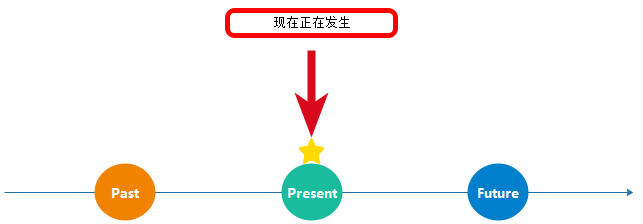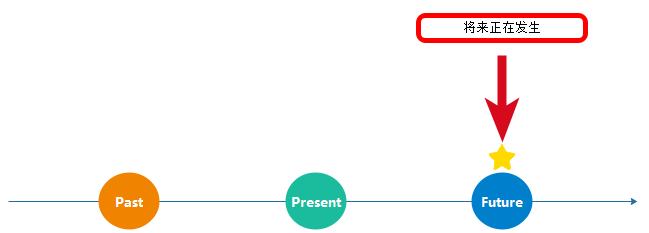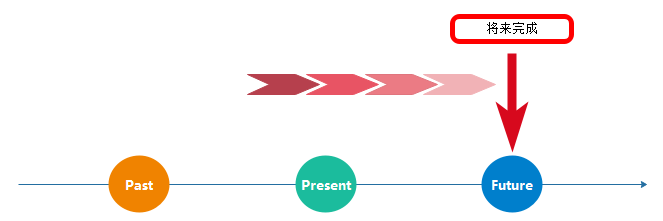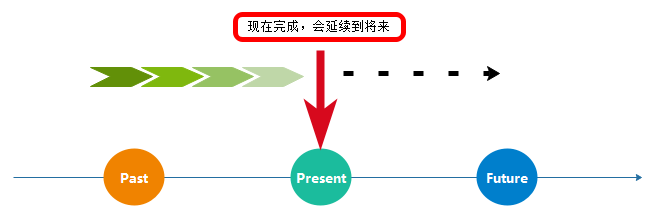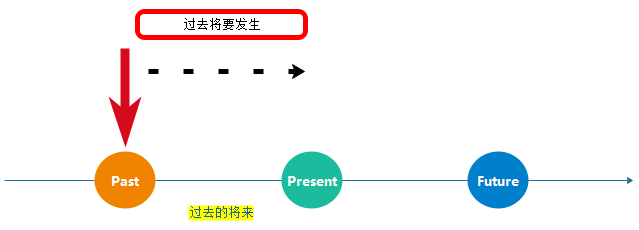什么叫时态(tense)?
动词的变化,动词的状态
在英语时态中,“时“指动作发生的时间,”态“指动作的样子和状态。
# 经典案例解析
I lost my pen # 过去时 lost = lose 的过去式和过去分词 ; 表示我以前掉了笔,但是现在找到了!
I have lost my pen # 现在完成时 我掉了笔到现在都还没有找到
☆1. 一般现在时: 表示没有时限的持久存在的习惯性的动作或状态,或现阶段反复发生的动作或状态 PS: 注意三单的复数问题,也可以用于描述真理或事实
常用时间状语: always, usually, often, sometimes, every week(day, year,month...) once a week, on Sundays, etc.
基本结构: ①be 动词;②行为动词
否定形式: ① am/is/are + not; ②此时态的位于动词若为行为动词,则在其前加don't,如主语为第三人称单数,则用doesn't,同时还原行为动词。
一般疑问句:①把be动词放于句首;②用助动词do提问,如果主语为第三人称单数,则用does,同时,还原行为动词。
例句:
I often go to work by foot
I get up at six o 'clock every morning
The earth mouse around the sun
There are four seasons in a year
☆2. 一般过去时:在过去某个时间里所发生的动作或存在的状态;过去习惯性、经常性的动作、行为 PS:大量不规则动词需要背下来,过去就已经完成的行为或动作
常用时间状语:ago, yesterday, the day before yesterday, last week(year, night,month...), in 1986, just now, at the age of 5, one day, long long ago, once upon a time, etc.
基本结构: ①be 动词;②行为动词
否定形式:①was/were + not; ②在行为动词前加didn't,同时还原行为动词
一般疑问句: ①was 或 were 放于句首;②用助动词do的过去式did 提问,同时还原行为动词
例句:
We studied English there in 2018
It took Yang Liwei about 21 hours to circle the earth 14 times in his spaceship.
There was no bus stop here last year.
Tom watched TV at home last night. He went nowhere.
☆3. 一般将来时: 表示将要发生的动作或存在的状态及打算、计划或准备做某事 PS:将来要发生的
常用时间状语:tomorrow, next day(week, month, year...), soon, in a few minutes, by..., the day after tomorrow, the month after next, etc.
基本结构:① am/is/are/going to +do; ② will/ shall + do
否定形式:①was / were + not ; ② 在行为动词前加didn't, 同时还原行为动词
一般疑问句:① be 放于句首; ② will / shall 提到句首
例句:
He'll come next week.
She will go to the cinema with her classmates tomorrow evening.
We are going to have a party tonight.
I am going to have a party tonight.
There will be a basketaball match in our school the day after tomorrow.
☆4. 现在进行时: 表示现阶段或说话时正在进行的动作及行为。询问别人 PS: 偶尔也会用于场景介绍,比如介绍画上面人们的行为。
时间状语: now, at this time, these days, etc.
基本结构: am/is/are + doing
否定行式: am/is/are + not + doing
一般疑问句:把be动词放于句首
例句:
He is doing the housework at home now
I am writing a letter
She is translating a novel these days
The students are reading English in the classroom now.
Look. A boy is writing on the wall
☆5. 过去进行时: 过去某段时间或某一时刻正在发生或惊醒的行为或动作
时间状语: at this time yesterday, at that time 或以when 引导的谓语动词是一般过去时的时间状语等
基本结构: was/were + doing
否定形式: was/were + not + doing
一般疑问句:把was 或were 放于句首
例句:
I was doing my homework at that time.
What were you doing this time yesterday?
We were watching TV at seven'o clock last year.
When the teacher came in, the students were talking.
6. 将来进行时: 将来某个时间正在发生的动作
时间状语: This time tomorrow, at 9 o' clock tomorrow, in a minute
例句: This time tomorrow they will be sitting in the cinema。。
☆7. 现在完成时: 过去发生或已经完成的动作对现在造成的影响或结果,或从过去已经开始,持续到现在的动作或状态 PS:昨天临时加班到现在,过去对现在的影响
时间状语: recently, already, yet, ever, never lately, since...for, in the past few years, for two weeks, etc.
基本结构: have / has + done
否定形式: have/has + not + done.
一般疑问句: have 或 has
例句:
I have just posted a letter.
I have studied English for two years
They have been in Beijing sine 1949
The haven't seen for two years.
☆8. 过去完成时: 以过去某个时间为标准,在此以前发生的动作或行为,或在过去某动作之前完成的行为,即“过去的过去”。PS:比如昨天晚上我9:00去等车,但是车8:30 就开走了
时间状语: before, by the end of last year(term, month...) , etc.
基本结构: had + done
否定形式: had + not + done
一般疑问句: had放于句首。
例句:
By the of last month, we had learned 12 English songs.
She had lived in the north for five years before she came here.
She thanked me for what I had done for her son.
9. 将来完成时: 将来某个时间将会完成的动作,并对将来产生影响
时间状语: by the end of + 将来时间
例句:
Will scientists probably have discovered a cure for cancer by the year 2090?
10. 现在完成进行时: 表示某一个动作开始于过去某一时间,延续或重复地出现至今,获将继续延续到将来
时间状语: for + 时间段(five years), all + 时间段(afternoon)
例句:
They haven't been meeting each other for five years
11. 过去完成进行时: 表示一个动作从过去某时开始,一直延续到另一个过去时刻,到那个时刻,该动作可能刚刚终止,也有可能还在继续。
时间状语: by the end of + 过去时间段(last month, last year)
例句:
By the end of last month they had been working here for about ten years.
12. 将来完成进行时: 动作从将来的某一时间开始一直延续到将来某一时间。是否继续下去,要视上下文而定。这个时态常和表示将来某一时间的状语连用。
例句:???
☆13. 过去将来时: 在过去将会发生的动作。立足于过去某一时刻,从过去看将来,常用于宾语从句或间接引语中。
时间状语: the next day(morning, year...), the following month(week...),etc
基本结构: ①was/were/going to + do; ② would/should + do
否定形式: ① was 或 were 放于句首; ② would/should 提到句首
例句:
I said I would buy you a car one day.
She said she would go to Shanghai for the holiday.
She said she going to swim next week
He told us that he would go to London next month
14.过去将来进行时: 过去某一时间而言,将来某一时刻或某一刻时间正在进行动作(一般出现在间接引语中)
例句:
She said she would be setting off on the 10 o' clock train
15. 过去将来完成时: 表示在过去将来某一时间以前发生的动作,并往往会对过去将来某一时间产生影响。(一般出现在间接引语中和虚拟语气)
例句: He told them he would have finished it by 8 o' clock
16. 过去将来完成进行时: 表示动作从过去某一时刻开始一直持续到过去将来某一时间(一般出现在间接引语中和虚拟语气)
例句:
I knew by that time he would have bee working there for 30 years
